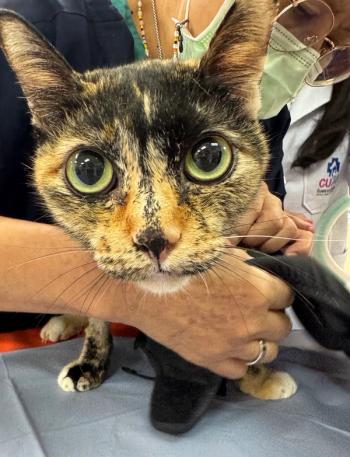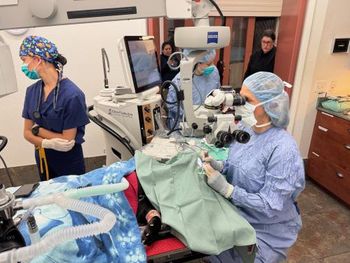
Managing, treating, and monitoring canine diabetes
Explore the latest insights on canine diabetes management, treatment options, and innovative continuous monitoring techniques in veterinary care.
This episode is sponsored by Adapet
Canine diabetes remains a significant and growing concern among veterinarians and pet owners alike. On this episode of the Vet Blast Podcast presented by dvm360, host Adam Christman, DVM, MBA, and special guest Natalie Marks, DVM, CVJ, CFCP, Elite FFCP-V, tackle the complexities of diagnosing, treating, and managing diabetes in dogs on site during the 2025 Fetch Kansas City conference.
Below is a partial transcript, edited lightly for clarity
Adam Christman, DVM, MBA: All right, let's talk about clinical signs. How do they present us when they come into the hospital?
Natalie Marks, DVM, CVJ, CFCP, Elite FFCP-V: So these diabetics usually have at least 2, 3, probably 4 of the main signs that we see, remember the 4 cardinal signs of diabetes, polydipsia, polyuria, polyphagia, but they're losing weight. So most of these dogs come in with some kind of myriad or kind of cocktail of those signs. However, in some of the more advanced stages, and I'm not talking our emergent cases, our DKA's, but the ones that have been kind of slowly brewing for a while, we can see pretty significant weight loss. So they can have a catabolic state because their cells aren't using glucose, so they're using fat and muscle. So often, those spinous processes along the back of the spine are more prominent. They're losing fat pads. They're losing some of their orbital pads. So look for that. They tend to have a pretty dull skin coat and hair coat, because, of course, the skin is the first place to show disease, the last place to get energy. Some of these dogs can have some generalized weakness and lethargy.
More advanced cases, of course, can get neuropathy. So we can get that hind limb almost kind of a paresis in a way, right? So they're kind of crouched down in the hind limb. They can be painful. We assume they have sort of that tingling sensation that we attribute right with humans with neuropathy, they don't tend to get that plantigrade stance that we see in cats, but just kind of that crouch down, think of like a German Shepherd kind of carriage.
So all of those can be signs that we see, but again, those four cardinal signs most common.
Christman: Okay, and how are they diagnosed?
Marks: Well, I think most of us are pretty comfortable looking for consistent hyperglycemia with concurrent glucose area right high blood sugar in the blood, high urine glucose levels. There are concerns about stress-induced hyperglycemia in dogs, certainly not to the level in cats, but we want to have consistency of greater than 250 milligrams per deciliter of our blood sugar. And again, with that glucose in the urine.
We can also see elevated liver values. So ALT, ALK, PHOS, GGT, we can see elevated cholesterol and triglycerides. This is a big one that I don't want people to forget about, because in some of our high risk breeds, like Schnauzers and Bichons and dachshunds, sorry.
Christman: I know.
Marks: I know but these dogs can have an elevated level pretty significant of their triglycerides in the blood. And what that does, it creates a hyperlipemic system . So a lot of these dogs will get lipemic uveitis, which is a pretty nasty, very cloudy looking disease, which, of course, any inflammation in the eye is not good, right? Predisposes us to glaucoma. A lot of these dogs, of course, can get rapidly, kind of approaching and presenting bilateral cataracts. Cataracts, of course, also an inciting respect for for glaucoma. So we want to be looking for that as well.
Christman: And we know that there's some challenges along the way. So share with the audience a little bit about some of the challenges that we face when you know, diagnosing diabetes.
Newsletter
From exam room tips to practice management insights, get trusted veterinary news delivered straight to your inbox—subscribe to dvm360.






